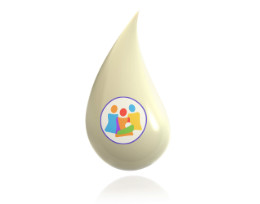Help, My Breasts are Swollen & Engorged! What Can I Do to Feel Better?
Updated 04/22
PDF Version
Swollen, engorged breasts can be very uncomfortable, and might make it tricky for your baby to latch well to nurse. It is very common to experience swelling or engorgement as your milk is increasing in volume from colostrum to mature milk (or “coming in”) – this usually occurs around 3-5 days after birth if you are a first-time birthing parent and about 2-3 days after birth if you have had previous children.
What You Can Do to Help with Swelling & Engorgement
- Feed your baby frequently.
Directly feed at least every two to three hours throughout the day/night in the first few weeks after the baby is born. As long as your baby is latched on and removing milk well, let them nurse for as long as they would like. Many babies will feed more frequently than every 2-3 hours, this is totally normal for newborns. Many babies also cluster feed (or seem to want to feed constantly) for certain periods during the day – many parents notice this tends to happen in the evening.If your baby will not nurse well, you will need to pump and/or manually express (using hand expression) your milk at least every two to three hours. Check in with a lactation specialist if swollen, engorged breasts are still a problem for you after one week.
- If your baby has trouble latching, manually express about 1-3 tsp (5-15ml) of milk from your breasts to soften the areola, making it easier for the baby to latch.
Watch the IABLE Manual Expression video (YouTube) to learn about manual expression. - You may find that applying heat to your breasts before nursing or pumping encourages milk flow.
A warm shower, a warm washcloth, or a moist heating pad directly on your breasts/chest can help promote milk flow. - After nursing or pumping, put something cool on your breasts or chest.
You may use cool compresses or cold packs such as ice packs, bags of frozen vegetables or frozen wet towels. Place these very cold items in a pillowcase to prevent frostbite to your skin. Place them over your breasts/chest for 15-20 minutes, lying flat on your back. These cold items will help to decrease swelling and engorgement. - Lie down on your back as much as possible.
Lying down helps to elevate the breasts, for the same reason you would put your legs up if they are swollen. Keeping your breasts elevated will help to move the extra fluid back into your body. - Lymphatic massage can also help remove excess fluids from your breast or chest.
This is a very gentle massage – similar to the light pressure when petting a cat. If you have a lot of fluid in your breast/chest tissue (also known as edema) from fluids given during labor and delivery, this technique can help relieve some of the swelling. To do this, first lay on your back. Starting with one side, gently make small circles over your breast moving from your nipple/areola either towards your collar bone, underarm, or cleavage. This handout can help guide you on performing this technique. - Take pain medication to help with discomfort.
Talk with your care provider about taking a medicine like ibuprofen or acetaminophen to help if the engorgement is painful. - Use a technique called “Reverse Pressure Softening”.
Reverse Pressure Softening is a special type of massage that makes it easier for your baby to latch on when you are engorged or have a lot of fluid in your milk making tissues. Reverse Pressure Softening involves using your fingers to push on the area around the areola (the dark part around the nipple) in order to get rid of the swelling that is around the nipple. The goal is to make the area around your areola softer and more compressible so your baby can latch on deeply when nursing. You can view a video of how to do this here.


